Some of the first landmarks that you see when you arrive there by train in Bruges are the towers of the Church of Our Lady and the Belfry of Bruges.
They are, however, flanked by an equally impressive building that has been one of the most important buildings in Bruges for centuries.
St. Salvator’s Cathedral in Bruges is perhaps lesser-known than the belfry and church but actually serves as the main cathedral in the city.
Unlike its more famous neighbor, you can explore the entire interior of this cathedral without having to pay a fee (which also makes it more crowded).
Let’s take a closer look at some of the most interesting facts about St. Salvator’s Cathedral, one of the greatest examples of Romanesque architecture in the world.
1. St. Salvator’s Cathedral is located just 100 meters northwest of the Church of Our Lady
St. Salvator’s Cathedral is located in the heart of the charming city of Bruges, Belgium. It occupies a central position within the historic city center, surrounded by other notable landmarks that contribute to Bruges’ unique medieval character.
The Church of Our Lady is located just a stone throw’s distance from the cathedral, but that’s not all. Here are some famous landmarks in the vicinity of St. Salvator’s Cathedral:
Grote Markt (Market Square)
This bustling and picturesque square is one of the most iconic spots in Bruges. It features the impressive Belfry of Bruges (Belfort) with its distinctive tower and the Provincial Court (Provinciaal Hof), both of which are significant landmarks in the city. The Grote Markt is just a short walk from St. Salvator’s Cathedral.
Basilica of the Holy Blood
Another notable religious site in Bruges, the Basilica of the Holy Blood, is located nearby. This basilica is renowned for housing a venerated relic, said to be a cloth containing drops of Christ’s blood.
Burg Square

This historical square is home to several important buildings, including the Bruges City Hall (Stadhuis) and the Old Civil Registry (Oude Griffie). The Burg Square is situated close to both St. Salvator’s Cathedral and the Basilica of the Holy Blood.
St. John’s Hospital
Just a short walk from the cathedral, St. John’s Hospital (Sint-Janshospitaal) is a medieval hospital complex that now serves as a museum. It provides insights into the history of medicine and houses a collection of artworks.
There’s something special about Bruges, and that’s simply because it breathes history. Every corner feels as if you’re transported right back to the Middle Ages.

2. The cathedral has its origins as a small 12th-century parish church
The cathedral’s history can be traced back to the 9th century when a small wooden church, likely dedicated to Saint Salvator (Savior), was established on the site.
This early church served as a place of worship for the growing Christian community in Bruges.
In the 11th century, the wooden church was replaced with a stone Romanesque building. This marked the beginning of the cathedral’s architectural evolution.
The Romanesque cathedral was characterized by its solid masonry, rounded arches, and relatively small windows.
Interesting note: The lower section of the current Romanesque tower still features the foundations of the earliest 11th-century construction phase.
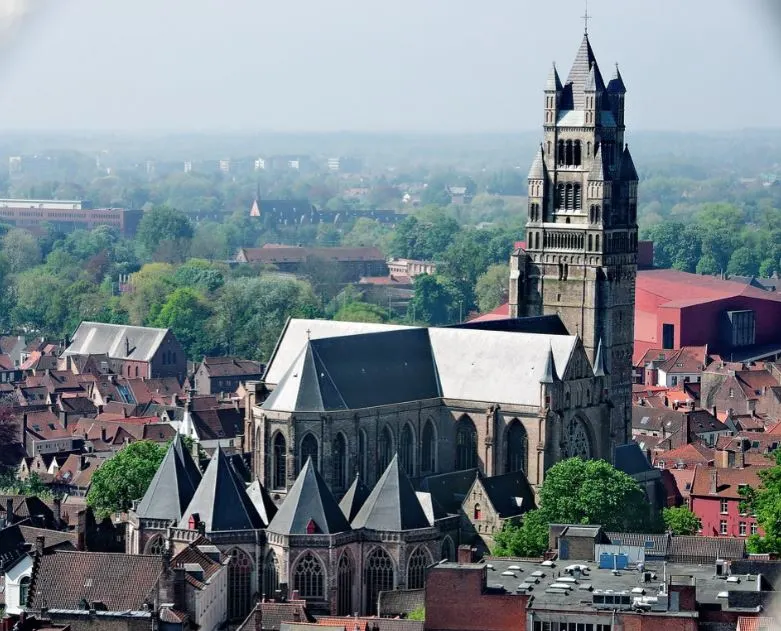
3. The construction of the current church started in 1250 and lasted a century
During the 12th and 13th centuries, Bruges experienced economic growth and increased trade, which led to a desire for grander and more ornate religious structures.
The cathedral underwent significant renovations and expansions in the Gothic architectural style, transforming it into a larger and more intricate building.
The 13th and 14th centuries saw the addition of pointed arches, ribbed vaults, flying buttresses, and larger stained glass windows to the cathedral.
These Gothic elements not only enhanced the structural stability of the building but also created a sense of verticality and grandeur.
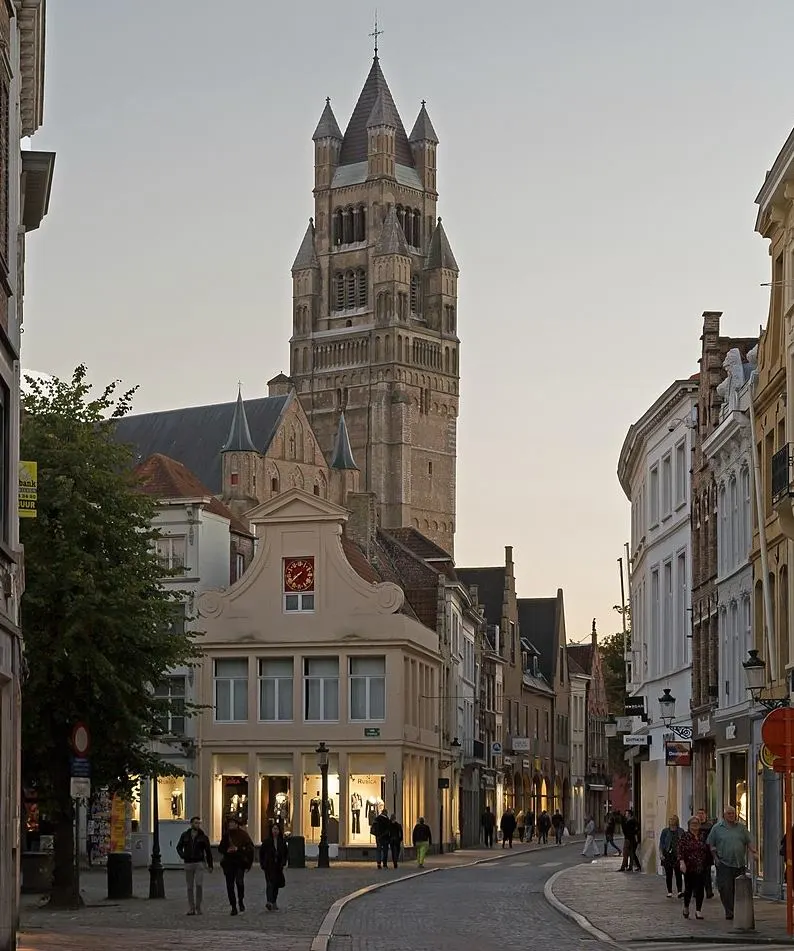
4. It was luckily spared during the French Revolution in the late 18th century
What’s remarkable about St. Salvator’s Cathedral is that even though it’s the main Roman Catholic Cathedral in Bruges today, it wasn’t the main church in Bruges until the 19th century.
St. Donatian’s Cathedral was the largest church in Bruges and was located in Burg Square, the historic heart of the city.
This was the former residence of the Bishop of Bruges, but because it was destroyed by the French occupiers during the French Revolution, St. Salvator’s Cathedral took over this role.
5. The church was only elevated to the level of a cathedral in the 1830s
Belgium became an independent country in the early 1830s and the new Bishop of Bruges didn’t waste any time to elevate the church’s status.
The relatively small parish church became a cathedral in 1834, a status that Bruges’ main church still holds today.

6. The imposing tower was designed by an English 19th-century architect
What’s fascinating about the fact that it was elevated to cathedral status is that back then, St. Salvator’s Cathedral was still a relatively small church.
It was dwarfed by the nearby Church of Our Lady and simply had to be adjusted to live up to its status as a cathedral.
In a surprising move, the church authorities hired an English architect named Robert Dennis Chantrell (1793-1872), a man who was best known at the time for his Gothic Revival designs of English churches.
Instead of integrating his favorite style into this church, he designed the expansion of the church and main tower in the Romanesque Revival style.
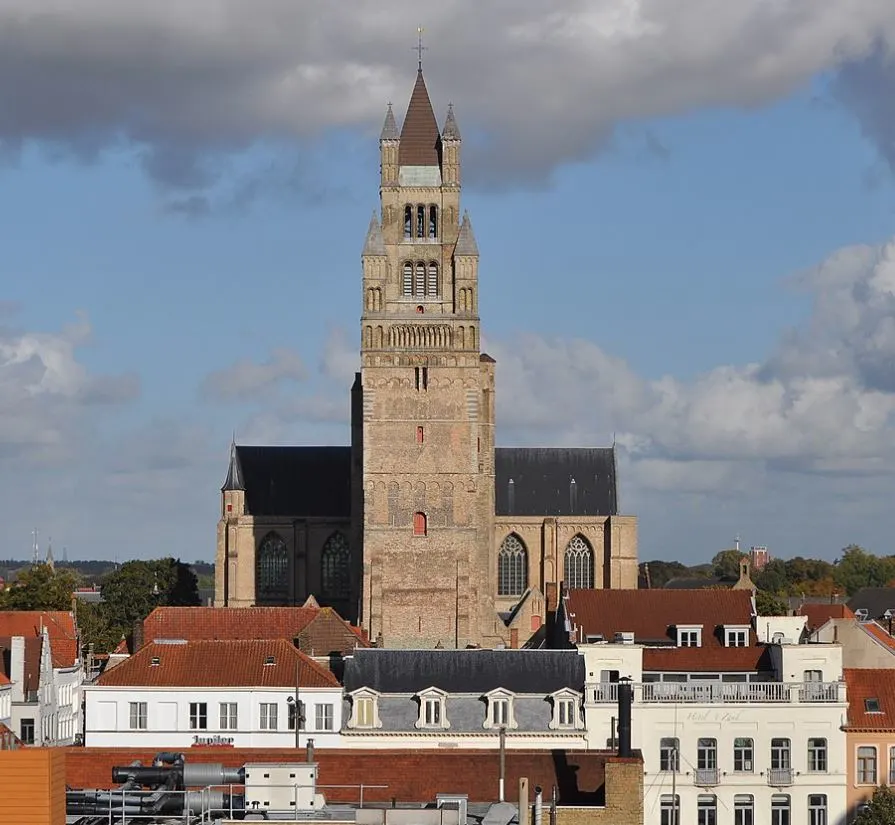
7. Not everybody liked the neo-Romanesque design of the cathedral’s sturdy tower
Choosing Romanesque architecture might have seemed like a good choice, especially since the original church was built using this medieval type of architecture.
Locals didn’t, however, appreciate the flat design of the church’s tower. After all, it was in sheer contrast with the pointy spire of the nearby Church of Our Lady.
The Royal Commission for Monuments or “Koninklijke Commissie voor Monumenten” decided to add small spires on top of the tower, elements that weren’t in the original design.
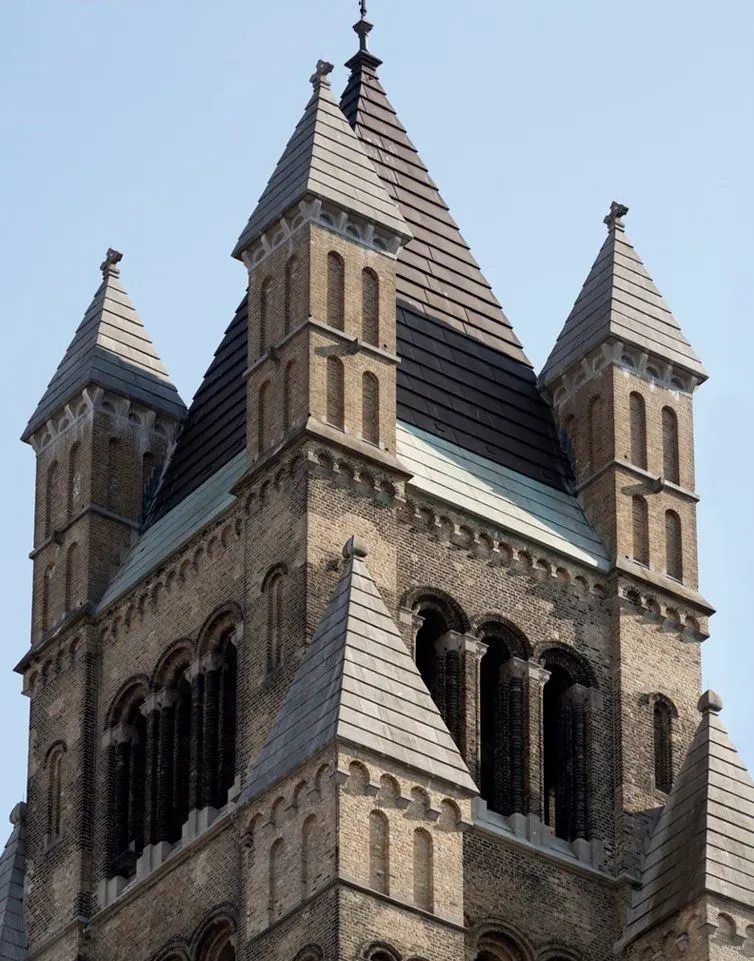
8. The cathedral houses a large number of artworks, including 18th-century tapestries
Entering the church is free as opposed to the Church of Our Lad which houses the Madonna of Bruges by Michelangelo.
This doesn’t mean that you have to skip entering the church, though, because it houses a remarkable number of amazing artworks.
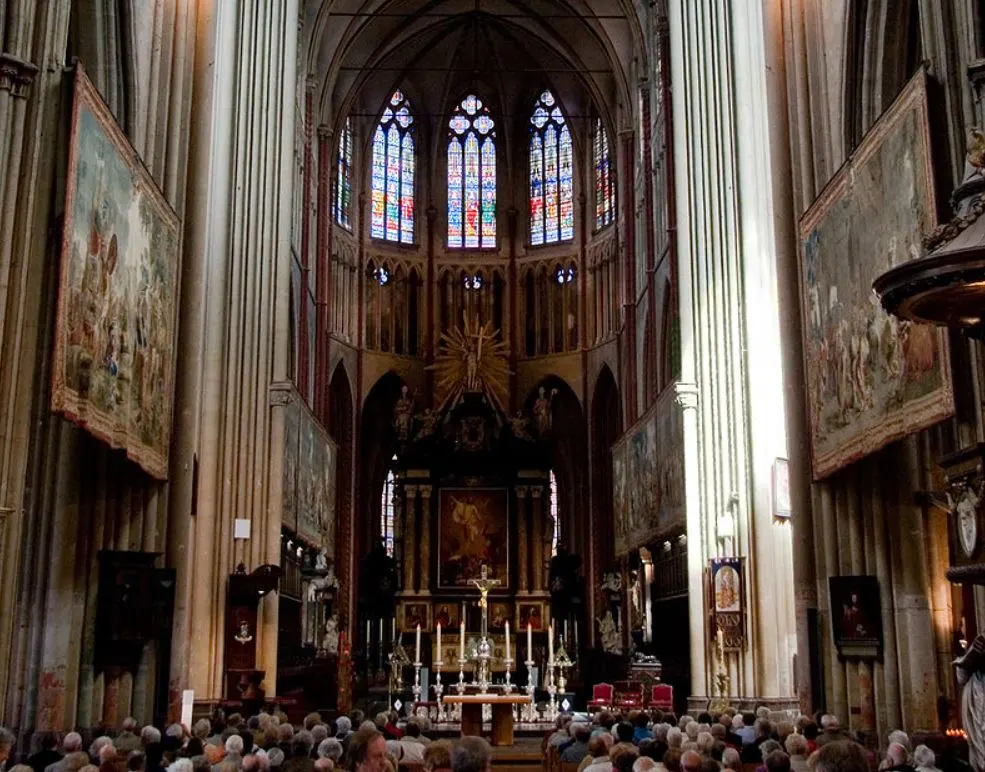
The most stunning feature inside the church is the collection of tapestries that decorate the choir. These were completed in 1731 and originally hung at the now-destroyed Sint-Donaaskathedraal.
The podium in this part of the church is also the original 16th-century design.
